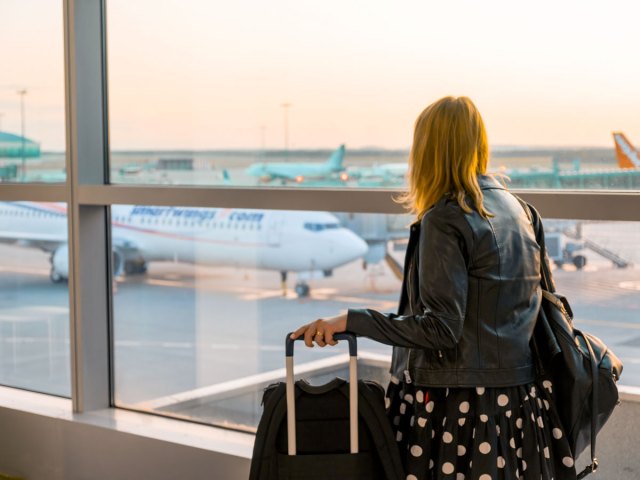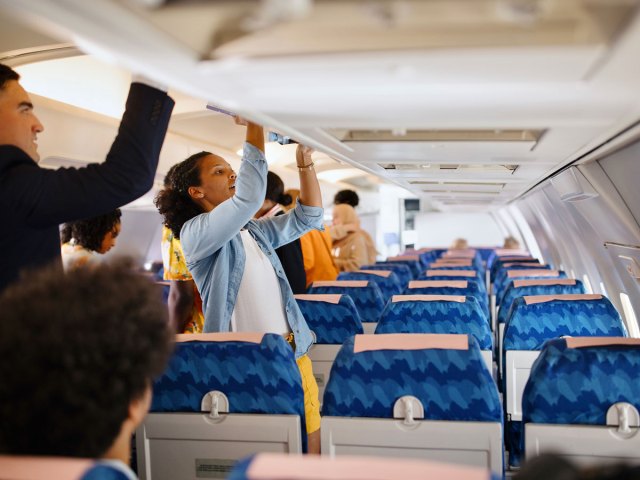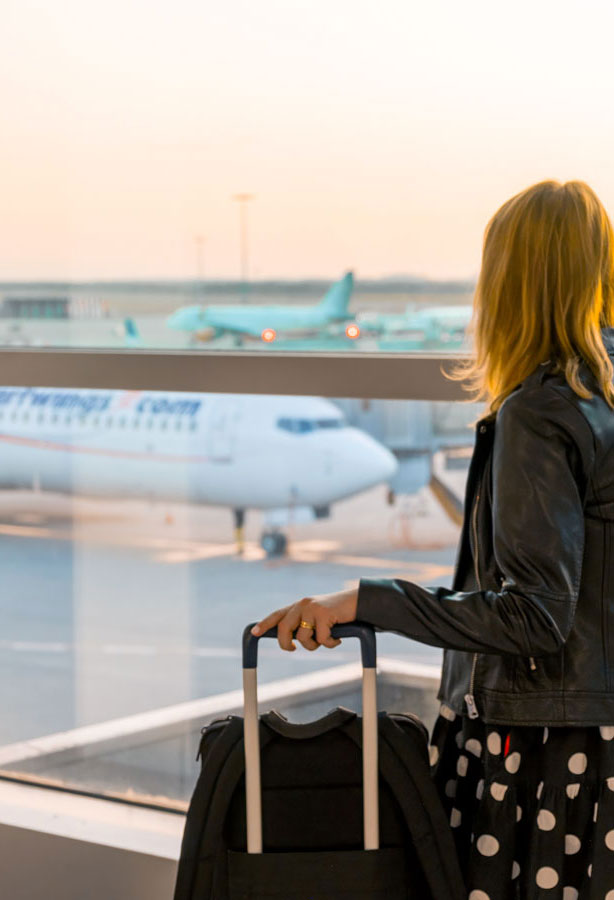What’s the most efficient way to board an airplane? You likely haven’t given this question a lot of thought, probably because the decision is made for you by the airline and most travelers have no choice but to accept the chaos of the airplane boarding process these days. However, there’s more to aircraft boarding than meets the eye. Studies on how to speed up the boarding process have captured the attention of airlines for years. Discover the science behind airplane boarding and how at least one airline is introducing a new process in an effort to make boarding more efficient.
Why Does Boarding A Plane Take So Long?

Airlines have a vested interest in speeding up the boarding process because they don’t make money when the aircraft is sitting on the tarmac between flights — they make money when it’s flying. With quicker turnaround times on the ground, an aircraft can fly more flights in a given day and bring in more revenue for the airline.
The primary factor that slows down the boarding process is the time it takes for each passenger to store their overhead carry-on luggage, according to Jason Steffen, an astrophysicist at the University of Nevada. In 2008, rising fuel costs exacerbated the issue of carry-on bags when most major airlines started charging passengers for checked bags, prompting many people to avoid these fees by traveling with a full-size carry-on.
Additionally, the size of the overhead bins on many aircraft — particularly older models — oftentimes cannot accommodate the size and amount of carry-on luggage travelers tend to bring on board these days. To address this, airlines such as Delta and United are retrofitting aircraft with larger overhead bins. But with less room to store bags on many planes, travelers become anxious awaiting their turn to board and tend to crowd the gate area or try to board before their group is called, further adding to delays.
And then there’s the airlines themselves, which have introduced increasingly stratified boarding processes — as many as eight or 10 distinct groups — to prioritize high spenders or frequent travelers, which is often at odds with what experiments have shown is the fastest way to board a plane.
How to Efficiently Board an Aircraft

Mathematicians, travel advisory groups, and others have tackled the problem of slow boarding. For example, Steffen, the astrophysicist at the University of Nevada, devised a method through real-life simulations that he says could be four to 10 times more efficient than current processes at major airlines. The Steffen Method calls for boarding in groups sorted by every other row, starting from the back of the plane, in order to reduce logjams in the aisle as people store their luggage in overhead bins.
In an attempt to break from the status quo, airlines have implemented various methods to find the ideal boarding formula. In October 2023, United Airlines launched a new boarding system that organizes economy class passengers in a new order: Travelers seated next to the window board first, followed by those assigned to a middle seat, and finally passengers in aisle seats. United claims that this process, dubbed “WILMA” (which stands for window, middle, aisle), saves them an average of two minutes per flight. To most people, two minutes is a quick scroll through Instagram while waiting in line, but to an airline, two minutes multiplied by hundreds of flights per day can really add up.
Southwest Airlines has taken a different approach to the boarding process. While they can no longer claim their famous 10-minute aircraft turnaround, Southwest is still one of the most efficient airlines in the industry, turning around a plane in roughly 20 minutes. Southwest swears by its unassigned seat method, in which passengers queue up to board in a first-come first-served fashion (based on time of check-in) and choose a random seat once they’re on the aircraft. Studies show this method speeds boarding up by reducing bottlenecks.
Why Aren’t More Airlines Following?

Ultimately, one of the biggest issues standing in the way of faster boarding are the airlines themselves. In an attempt to increase profits, airlines offer early boarding for those who purchase business and first class seats, as well as priority boarding for frequent fliers and credit card holders — all of which interfere with the careful calculations of the above methods.
The other piece of the puzzle is carry-on luggage. Atmosphere Research Group analyst Henry Harteveldt says that passengers without carry-on luggage that needs to be stored overhead will always be the fastest to board. More passengers without full-size carry-ons equals faster boarding. Airlines could sway the number of quick-boarding passengers in their favor if they started charging for full-size carry-ons. But Henry also notes that for this to work, airlines need to improve their track record with lost checked luggage.
Airlines are often hesitant to eliminate priority boarding because it’s a perk that can increase brand loyalty among their biggest spenders. Using the “WILMA” process or astrophysicist Jason Steffen’s method (boarding by every other row to reduce logjams in the aisle) also runs the risk of splitting up families. Charging for full-size carry-ons certainly wouldn’t sit well with many travelers, either. Until efficient airline boarding equally benefits both the airline and the travelers, we’re likely to be stuck mulling this condrumdum over for a while longer.
More from our network
Daily Passport is part of Inbox Studio, which publishes content that uplifts, informs, and inspires.
















